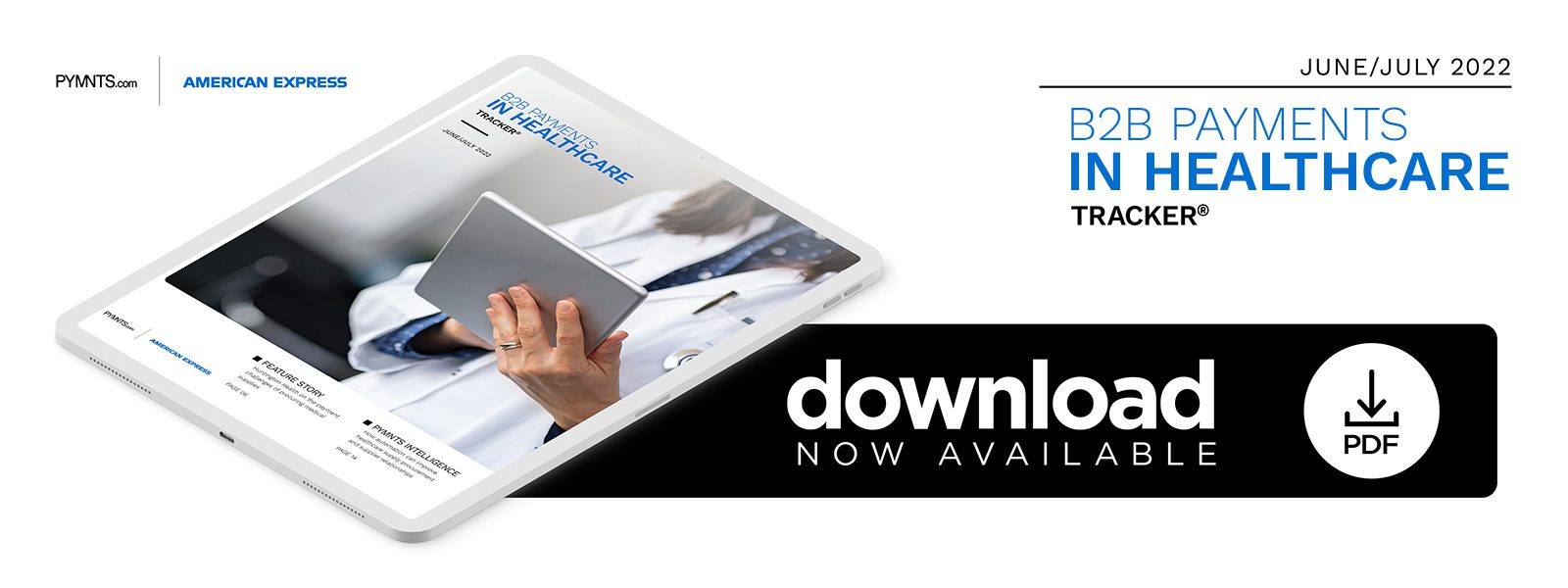PYMNTS Intelligence: How Automation Can Improve Healthcare Supply Procurement and Supplier Relationships

The pandemic highlighted the need to ensure that medical supplies can be easily procured. The global market value for medical supplies was $136 billion in 2021 and is expected to grow at a compound annual growth rate of 4.5% to reach a value of just over $185 billion by 2028. Suppliers of medical goods need to be paid, but the industry has been slow to adopt technologies to send invoices and process payments quickly and seamlessly.
Some 70% of healthcare invoices are still paper-based, according to one report, and almost 85% of purchases are paid for with paper checks. Not surprisingly, these outdated processes lead to errors that cost the industry up to $6 billion in payment mistakes. Almost $40 billion is wasted due to invoicing problems, often leading to supplier payments averaging more than two months late.
Outdated legacy systems and manual processes result in the number of days sales outstanding averaging more than 30 days for many hospitals. Suppliers track the average length of time customers take to pay their bills, and the consequences of cash flow problems and credit issues from too many late supplier payments can damage healthcare organizations’ supplier relationships.
The healthcare industry has been slow to adopt automated, cloud-based payment and invoicing solutions that can increase efficiency and eliminate costly errors. This month, PYMNTS takes a close look at the inefficiencies and challenges suppliers and medical service providers face regarding payments for bulk medical supplies and equipment. We also explore how payments automation can eliminate some friction inherent in procurement and payment for medical goods.
The Case for Payment Automation in Healthcare
Late payments and invoicing errors are some of the top concerns of healthcare suppliers. Manual invoicing and payments processes cause delays that can be as long as six months, according to one report, and errors can tack on another 64 days. Automation of the procure-to-pay process, which involves digitizing requisition, ordering, receiving and payment on one platform, can help reduce paper and handle electronic payments such as automated clearing house (ACH) debit and virtual credit cards directly from a hospital’s enterprise resource planning solution.
Lack of visibility in the procure-to-pay pipeline is another pain point solved through automation. Almost one-third of suppliers said the inability to see the status of payments highly impacts their business by making it difficult to finance short-term expenses or delaying production, new product launches or capital investments. Automation can give better visibility, allowing suppliers to better predict when to expect payments and provide on-demand payment details for accounts receivable (AR) reconciliation.
Match exception errors, which occur when buyer purchase orders and supplier invoices fail to match, are a problem for up to 15% of invoices. Almost one-third of healthcare suppliers indicate that these errors adversely affect their organizations’ AR functions, often blaming PDF or paper-based payment methods. By using technologies such as artificial intelligence and electronic data interchange (EDI), automation reduces human error and digitizes the entire procure-to-pay process, enabling invoices with exception errors to get the quick attention needed.
Removing the Friction From the Procure-to-Pay Process
Healthcare organizations looking for reasons to switch to automated payments operations would do well to have a conversation with chief financial officers (CFOs) from other industries. PYMNTS’ research found that an impressive 91% of CFOs across many sectors said payment process digitization improved business efficiency, and another 84% said it improved management of working capital. Greater transparency is a key reason for digitization efforts, according to 56% of CFOs surveyed. As the pandemic set in, 71% of CFOs said their organizations stepped up digitization of payment systems.
Healthcare and hospital systems lag behind, as only about 14% of suppliers in a recent survey indicated they received purchase orders through EDI systems and only 11% use the technology to send invoices, relying instead on outdated methods such as PDF or email. Suppliers overwhelmingly prefer ACH and direct deposit payments over paper-based methods, according to one survey, yet nearly nine out of 10 payments are still made by check.
Automation of payment and invoicing processes can grant both healthcare organizations and their suppliers many benefits, among them better speed and predictability of payments, increased protection of sensitive patient data and more accurate invoicing and payment status. These improvements can help healthcare organizations focus on patient care and maintain positive supplier relationships by ensuring that the procure-to-pay process is mutually beneficial.

